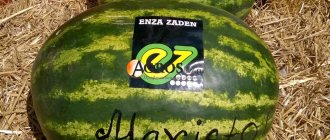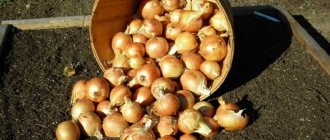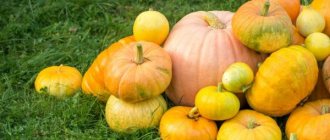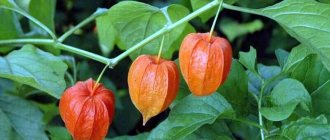They learned to grow eggplants in the Urals and Siberia, so compared to the harsh Siberian conditions, the Moscow region is simply a paradise for them. There are nine varieties known that have demonstrated good germination and high yield in temperate climates.
Eggplant is one of the most heat-loving crops. Previously, it was believed that growing this nightshade crop with a growing season of 100-120 days in a temperate climate and, in particular, in the Moscow region was unrealistic. However, breeders managed to adapt this heat-loving plant to the temperate climate of the Moscow region and lack of sun. Of course, for these conditions it is better to select early and mid-season varieties and grow them only in seedlings.
Agate F1
Quite a productive variety with medium-sized bushes. The density of plantings should not exceed 6 plants per 1 sq.m. The variety was repeatedly tested in the conditions of the Moscow region and it was found that for full cultivation, seed sowing should be carried out no later than mid-May. At the same time, they can be sown directly into open ground, covering the plantings with film at night. The fruits are juicy purple in color, cylindrical in shape with pleasant pulp that is absolutely not bitter. Therefore, you can cook eggplants of the Agat F1 variety without first soaking them in salt water. The variety is quite resistant to pests and diseases; the bushes require regular watering and fertilizing, but do not tolerate autumn frosts well.
| Purpose | Productivity (kg/sq.m) | Fruit weight (g) | Maturation (days) | Flesh color |
| 5-7 | 230-260 | 100-110 | White | |
Content
- 1. Choose an eggplant variety
- 2. Early varieties of eggplant
- 3. Mid-season eggplant varieties
- 4. Late-ripening eggplant varieties
- 5. The best varieties and hybrids of eggplant for 2021
The once exotic eggplant has today become one of the traditional vegetables for Russian gardeners.
The secret of its popularity is its simple cultivation and delicious fruits. The key to the success of good harvests is to adhere to the basic rules of caring for this crop, one of which is the correct choice of varieties. Different varieties of eggplant are suitable for different regions or conditions, and their cultivation is also somewhat different (mainly in the timing of planting in open ground). Let us also recall that eggplant is a heat-loving crop, and the harvest of even early varieties largely depends on the number of sunny days in a particular summer period (in other words, the harvest of one year can be very different from the previous one).
Alenka
A very noticeable and original variety. It is notable, first of all, for the unusual color of the fruits - they are light green and more like large, smooth-skinned cucumbers. Fruiting is abundant even despite the unstable weather of the Moscow region. It is recommended to sow seeds in February-March with the obligatory cultivation of seedlings in a greenhouse or hothouse. Surprisingly, during cooking or pickling, eggplants of this variety can be combined with fruits of other varieties. Alenka is practically not affected by pests (apparently, they are scared off by the unusual appearance of the plant), and with the right agricultural technology it will produce a stable harvest.
| Purpose | Productivity (kg/sq.m) | Fruit weight (g) | Maturation (days) | Flesh color |
| 6-8 | 300-330 | 105-110 | Greenish | |
Unfavorable days
- May - 3, 4, 10, 11, 25, 26, 30, 31;
- June - 1, 9, 10, 14, 15, 23, 24, 27, 28.
The planting process itself is not too different from the manipulations carried out in the greenhouse. The exception would be that eggplants may require agrofiber shelter, which will protect young seedlings from the night cold. The material is pulled onto arcs that are installed over the beds.
The timing of crop ripening will depend on the selected variety. For example, early varieties ripen approximately 110 days after the appearance of the first shoots, medium varieties - after 120, and late varieties - after 140.
Albatross
This variety is famous for its high yield. Although the bush is not very impressive in appearance - it grows no higher than 70-80 cm. Depending on environmental conditions, eggplants of this variety can grow both in open ground and in a greenhouse. It is recommended to sow seeds in mid-March. The fruits are pear-shaped with dark purple skin. The pulp is without bitterness, which is very convenient for culinary experiments. The variety is practically immune to two main diseases of eggplant: cucumber and tobacco mosaic. True, resistance to other diseases is low, so the plant needs to be constantly fed, watered and preventative.
| Purpose | Productivity (kg/sq.m) | Fruit weight (g) | Maturation (days) | Flesh color |
| 7-9 | 350-400 | 120-140 | Greenish | |
Features of growing eggplants in the Moscow region
To get a high harvest in the Moscow region, it is necessary to plant vegetables in a greenhouse, since in such conditions they are most protected from external adverse factors. But not every summer resident can afford to install such a structure on the site. In this case, do not despair, because you can grow eggplants even in the northern regions without creating greenhouse conditions.
Bagheera F1
This hybrid variety can be called one of the most successful breeding products, since it turned out to be high-yielding and resistant to a number of diseases. It is recommended to plant seeds in mid-March, and the bushes are designed exclusively for greenhouse cultivation. Externally, the fruits look very attractive and retain their presentation for a long time. Their length reaches 20 cm. The pulp is very pleasant to the taste, with virtually no bitterness. The variety is resistant to most diseases and is little susceptible to attack by pests.
| Purpose | Productivity (kg/sq.m) | Fruit weight (g) | Maturation (days) | Flesh color |
| 6-8 | 250-350 | 100-110 | Light green | |
How to get seedlings at home?
You need to start planting eggplants in the Moscow region around the third ten days of February. Then the seedlings will be ready for planting in the ground by the third decade of May. This is the most optimal time for sowing this crop in a given area.
- Preparing the seeds . Before planting seeds in the ground, they need to be soaked (how to speed up seed germination?). To do this, keep them for 4 to 6 days in a cloth moistened with water. It is necessary to constantly monitor so that the fabric does not dry out.
- We are preparing the ground . To prepare suitable soil for eggplants, mix humus, soil from the garden, peat, ash and sawdust or coarse sand in equal proportions.
- Choose a container . Eggplants have a delicate root system. They do not tolerate picking and transplanting well. Therefore, it is best to grow it in peat pots.
- Sowing . Place the swollen seeds in pots. Sprinkle 1 cm thick prepared soil on top. Water. Cover with glass or film.
Don Quixote
You definitely won’t confuse this eggplant with any other. The fruits are dark purple, elongated saber-shaped, very large and significantly larger in weight than the fruits of other varieties. They contain few seeds, so the culinary properties of the “little blue ones” exceed all expectations. Particularly tasty dishes are obtained from fried slices or pieces of vegetables. Bushes are almost not affected by spider mites. The variety is recommended for cultivation in winter and spring heated and unheated greenhouses.
| Purpose | Productivity (kg/sq.m) | Fruit weight (g) | Maturation (days) | Flesh color |
| 6-8 | 250-350 | 100-110 | Light green | |
Picking up eggplant seedlings
Eggplant seedlings can be pruned when they grow two true leaves. Before this, the plants need to be watered.
I pour into individual cups with a capacity of approximately 450 - 500 ml. This will allow the seedlings to develop a good root system and last until planting on the site. I don't use peat pots. Packages for juices and dairy products (milk, kefir, etc.) are convenient. At this stage of growing seedlings, I use the same high-moor peat, to which I add sand and loose compost.
Eggplants do not like their roots to be damaged. Therefore, when picking, it is important not to destroy the root ball. I have a tiny, narrow, pointed spatula that is very convenient for transplanting growing seedlings. I advise everyone to purchase sets (for adults, not children) with small metal shovels and rakes, which are sold in many stores.
I plant seedlings with a slight depth. I do this in the following sequence: first I water the soil, onto the surface of which I lower the seedling, then I pour dry soil almost up to the cotyledons. To compact the soil and fill all the voids near the roots, I shake the planting cup and lightly tap it with my fingers. After that I water it a little. If you add wet soil to the roots, it will form clumps, leaving voids between the roots. Possible breakage of fragile roots. After watering, the earth settles, so you need to immediately add some high-moor peat. I leave part of the stem and cotyledons uncovered.
Giselle F1
This early variety is distinguished by high yield, even if the plants are planted in open ground. It is recommended to sow seeds in mid-March, and seedlings can be transplanted from May 25 to June 10. The bushes grow compact, with a height of only about 120 cm. The fruits are round, cylindrical in shape, very large and tasty. The skin is dark purple, almost black. There are no restrictions on preparing dishes from Giselle F1 eggplant. In addition to excellent taste, the fruits retain their fresh appearance for a long time and do not spoil. This variety is not very popular due to the fact that when growing it is necessary to strictly follow agricultural practices, regularly feed the plants and loosen the soil around them. But if you follow these simple rules of care, Giselle F1 will surprise you with a generous harvest.
| Purpose | Productivity (kg/sq.m) | Fruit weight (g) | Maturation (days) | Flesh color |
| 10-15 | 300-500 | 110-120 | White with a gray tint | |
Growing seedlings
Growing eggplant seedlings, in fact, is divided into two unequal phases: at first everything is very difficult, and when the seedlings grow up, caring for the seedlings becomes no more difficult than caring for a tomato seedling. Not every summer resident dares to do this activity: blue seedlings require a lot of attention and patience.
When to plant eggplant seedlings
Eggplant seeds are slow-witted: unprepared seeds take a very long time to germinate, and even prepared seeds do not do so like other crops. The first shoots from seeds that have been worked hard on may appear in a week, and then the next ones may appear for another ten days. Therefore, you have to start preparing for seedlings in winter, regardless of whether you plan to grow eggplants in a greenhouse or transplant seedlings into open ground.
It is believed that many modern varieties can be sown for seedlings even in the second half of March, especially if you purchase high-quality seeds that have been prepared using unique technologies before sale. But if you do it the old fashioned way, then you need to prepare eggplant seeds for sowing from mid-February, and sow them at the latest in early March. This is an almost universal term: it is suitable for most climatic regions. If in the Moscow region they did not have time to “bury” the seeds before March 15, there is no point in starting: it is better to buy ready-made seedlings at the end of spring.
Preparing for sowing
It is best to sow eggplants directly into medium-sized peat pots. But since this way they will occupy a large area in the apartment all spring, they are often sown in a small common box, and then picked, although this culture does not respond very favorably to picking. The choice of soil for seedlings must be approached responsibly. If you have peat and sand, you can make the mixture yourself by mixing good soil and these two components: half and half peat and soil and ten percent sand.
Peat can be mixed with sawdust and humus (2:1:2), or even without sawdust, but you must immediately add 50–60 g of complete mineral fertilizer and a handful of wood ash to a bucket of any mixture. The mixture you prepare yourself should be disinfected (the usual method is to pour it with a pink solution of potassium permanganate). However, to grow a dozen bushes, it’s easier to buy ready-made soil in a store, choosing the one with eggplants or at least tomatoes on the package. The soil is placed in a box in a layer of about 8 cm and lightly compacted.
The solution on the right is suitable for disinfecting the soil; the one on the left is suitable for treating seeds.
Seeds are also disinfected before sowing, but for them it is necessary to prepare a more concentrated solution of potassium permanganate, dark in color. Bathing time is 20–30 minutes, after which rinse with clean water. If we are talking about growing in unprotected soil, it is necessary to harden the seeds in the refrigerator (in a wet cloth, 3-4 days).
Immediately before sowing, it would be a good idea to treat the seeds with a growth stimulant; for eggplants this is a very desirable procedure. You can use Epin-Extra, Zircon and others, strictly according to the instructions. It happens that the seeds are germinated before sowing, but you can sow this way: during these few days in the wet state, they have already swollen enough.
Sowing seeds for seedlings
If you decide to sow seeds in a box, then you need to do this according to a 5x5 cm pattern to a depth of about 1.5 cm. You can take the seeds with tweezers and lay them on the surface of the wet soil, and then add it on top so that the seeds are at the desired depth . The easiest way to water crops is to put a layer of snow about five centimeters on top. Having melted, it will evenly saturate the soil and compact the soil as required. In addition, snow water activates growth processes.
The snow will quickly melt and water the sown seeds thoroughly
The box must be covered with glass or transparent film and placed in a warm place. The optimal temperature for germination is 25–28 °C. Do you need light? It is not necessary for the emergence of seedlings, but immediately after the formation of the first “loops” on the surface, the box will need to be moved to a lighted place, otherwise the seedlings will quickly stretch out. Therefore, just in case, it is worth organizing the light right away. If the soil surface dries out while waiting for germination, it should be moistened with a spray bottle.
Seedling care
The first shoots will appear in about seven days, but most likely there will be few of them. The peak emergence of seedlings from prepared seeds will be in another three days, and then this process will drag on for another week. What about the temperature? After all, young seedlings need to be kept cool, 16 degrees. And at the same time, the pecking of the next ones will slow down. Somehow this dilemma must be resolved. It is best to give the “upstarts” the opportunity to stretch out, but not to destroy the main quantity, that is, move the box to a cool place at the moment mass loops appear.
A harsh regime is required for five days, then the temperature is gradually raised to 23–25 ° C (at night a little less) and kept this way until the end of growing seedlings. In addition to temperature and illumination, monitor the humidity regime. Water with warm, settled water 1-2 times a week, but in moderation: excess moisture increases the risk of seedlings getting sick with blackleg. Ten days after germination, a small supplement is given: 1 tablespoon of urea per bucket of water. The box is turned from time to time towards the light source so that all seedlings receive it equally.
Seedlings grow unevenly, and picking into peat pots has to be done selectively. They do this very carefully, removing from well-watered soil those seedlings that have a couple of true leaves, or preferably three. The worst specimens are rejected. We must try to dig up the seedlings with a clod of earth and not damage the roots. At the very least, you shouldn’t specifically pinch them. If the root is very long, you can shorten it slightly, this is not fatal.
Seedlings must be removed from the box carefully, trying not to damage the roots.
The most suitable size of containers for picking is approximately 10x10 cm, the soil is the same as in the box. In the center of the cup, make a hole the size of the seedling removed from the soil, lower it there almost without deepening. If the seedlings have managed to stretch out greatly, they can be buried almost to the cotyledon leaves. The soil around the plant is gently squeezed with your fingers, and then watered with warm water. The seedlings are shaded from the bright sun for 2-3 days until they take root.
Further care is the same as before the pick. Water the seedlings once every few days, soaking all the soil in the pot, but without making it waterlogged. Fertilizing, if required, is carried out simultaneously with watering. If the seedlings grow normally, there is no need to feed them in vain: after all, they prepared nutritious soil. But if the leaves turn light green, you need to feed them. Azofoska, nitrophoska or just wood ash are suitable. The last teaspoon can simply be sprinkled into the pot before watering, without getting on the leaves.
2-3 weeks before planting the seedlings in the garden, they are hardened off by taking them out onto the balcony, first for a short time, and then for several hours. In this case, of course, the outside temperature should not be too low: 12–14 °C for seedlings is already stressful. On the morning of transplantation, the seedlings are well watered. The best eggplant seedlings should have a height of 20–25 cm and 5–8 large green leaves. This happens at approximately 2.5 months of age. Eggplants should bloom in a permanent place.
The finished seedling is a viable bush with large leaves
Transplanting seedlings into the ground
If the seedlings were prepared for a greenhouse, then they are planted in early or mid-May (depending on the quality of the greenhouse), in open ground - only in early June, be sure to cover them with spunbond or lutrasil for the first time.
Recent Entries
5 working ways to use tar in the garden 7 indoor plants that help you get married even in adulthood Indoor plants that can bloom in trouble
Planting in open ground
It is desirable that at the time of planting the average daily temperature is not lower than 20 °C. In the Moscow region, this cannot be expected, and seedlings are initially planted under temporary shelters. But in any case, this should not be done until the soil warms up to 14 ° C at a depth of 10–12 cm. They try to plant eggplants in the evening, when the sun is no longer hot; It’s good if the next 2–3 days are expected to be cloudy.
The bed can be of any convenient size, but in the Moscow region, experienced gardeners prepare warm beds for eggplants. They are made a long time ago, choosing a well-lit place, protected from the northern winds by a house wall or a solid fence. Even the previous summer, they dig a hole 20–25 cm deep, the size of the future bed, and gradually fill it with all sorts of waste: sawdust, leaves, small twigs, grass, etc. Peat can be easily obtained in the Moscow region, so all this garbage is generously sprinkled with it. Periodically water everything accumulated with infusions of manure or bird droppings. In autumn they are covered with clean fertile soil.
When preparing warm beds, any organic waste is suitable.
This creates a high bed, the sides of which are usually fenced with boards, slate, etc. In the spring, the bed is sprinkled with wood ash and a week before planting the seedlings, it is generously spilled with warm water with the addition of mullein infusion. After a few days, they loosen, and before planting, holes are made according to the size of the pots with seedlings. The planting pattern for eggplants depends on the variety, but there should be no less than 35 cm between plants, and from 50 to 70 cm between rows.
Peat pots are lowered into holes with a slight depth of 2–3 cm. Eggplants do not require tilting. It is advisable to immediately provide pegs if the variety is tall and will then require gartering. The seedlings in the garden bed are watered with warm water, and the soil around the bushes is lightly mulched. Be sure to build a light canopy and cover the plantings with non-woven materials.
Planting in a greenhouse
In greenhouses, especially those made of polycarbonate, ideal temperature conditions are created for eggplants. However, we must remember that overheating is also harmful for this crop; if the weather is too hot, the flowers are not pollinated and fall off. When planting seedlings in a greenhouse, you need to pay attention to the temperature of both the air in the greenhouse and the soil; it should be no colder than 14 °C.
Before planting seedlings in a greenhouse, you must carefully prepare the soil in it. In the fall, all plant debris should be removed and the soil should be disinfected. In case of diseases, it is better to change the soil completely. In the fall, you should also form a bed by digging up the soil with fertilizers (rotted manure, ash, a little superphosphate). A week before planting seedlings, the bed should be spilled with a weak solution of copper sulfate (2 tablespoons per bucket of water) and covered with film.
After a day, the film is removed and the soil is allowed to dry to the point where it can be worked with. They loosen it deeply, level it with a rake and begin planting seedlings. Planting patterns are the same as outside the greenhouse. Some compaction is possible, but too tight a fit increases the risk of disease.
For tall varieties, it is convenient to use checkerboard planting: the distances between plants in the rows are the same, but in adjacent rows they are not planted opposite each other.
In wide greenhouses, they usually make a wide bed in the center, planting eggplants in it in two rows. Narrower beds for other vegetables are placed along the walls. In small greenhouses, it is better to build two wide beds along the walls with a passage between them. The distance from the bushes to the walls depends on the geometry of the greenhouse. In greenhouses with vertical walls this is 25–30 cm; in the case of inclined walls, you need to step back more from the wall. The planting technology is the same as in open ground.
Video: eggplants in a greenhouse
Robin Hood
The variety is of interest to summer residents near Moscow primarily for its early ripening and versatility - vegetables can be grown both in open ground and under film cover. Seedlings planted in May will produce their first fruits already in July (in greenhouse cultivation) or August (in open ground conditions). The bushes grow up to 1 m. The fruits are medium in size, soft purple in color, without bitterness, they can be “salted and fermented.” Robin Hood is not very resistant to disease, but it copes well with adverse weather conditions.
| Purpose | Productivity (kg/1 sq.m) | Fruit weight (g) | Maturation (days) | Flesh color | |
| 6-8 | 250-300 | 90-110 | Bright white | ||
Eggplant varieties for greenhouses
Planting indoors makes the gardener’s task a little easier. This is achieved by stabilizing the temperature and a certain humidity. Plant growth proceeds at a measured pace, everything develops in a timely manner, ovaries form on time and fruits ripen.
The selection of varieties is also necessary according to certain criteria:
- daylight hours;
- cold resistance;
- and other characteristics important to an individual family.
Bagheera F1
High immunity to common crop diseases makes this hybrid popular among summer residents. Does not require special care.
Characteristic:
- grows up to 1.4 m;
- ready for use on the 115th day;
- harvest volume 3 kg per bush;
- the hue of eggplant skin is purple;
- cylinder shape;
- vegetable weight 250 g, length 20 cm, diameter 5 cm;
- the flesh inside is creamy;
- There is bitterness in the taste.
The Bagheera hybrid does not tolerate low and high temperatures; this problem will not be so acute in a greenhouse. Compact bushes take up little space.
Caviar F1
An excellent hybrid, resistant to diseases and suitable for a variety of dishes using it. Can be used for any kitchen table masterpiece.
Description:
- grows up to 80 cm;
- ready for use on the 125th day;
- harvest volume 7 kg per 1 m2;
- The shade of eggplant skin is dark purple;
- pear-shaped;
- vegetable weight 350 g, length 18 cm, diameter 8 cm;
- the pulp inside is light;
- There is no bitter taste and there are no seeds.
Compliance with planting rules and timely implementation of agrotechnical techniques will help to obtain a record harvest.
Black Prince
Another great job by the producers of new varieties. The developed variety of the crop is undemanding to the composition of the soil, unpretentious, and has the ability to quickly form ovaries.
Characteristic:
- grows up to 60 cm;
- ready for use on the 115th day;
- harvest volume 8 kg per 1 m2;
- The hue of eggplant skin is deep purple;
- curved cylinder shape;
- vegetable weight 350 g, length 20 cm, diameter 7 cm;
- the flesh inside is greenish;
- They don't taste bitter.
There are no thorns, which greatly simplifies the work of collecting vegetables. The productive type of crop Black Prince allows you to collect your own planting material.
Donetsk fruitful
This early-ripening variety is relatively resistant to Fusarium wilt. Undemanding in care, it is rapidly gaining recognition among summer residents.
Description:
- grows up to 50 cm;
- ready for use on the 130th day;
- harvest volume 5.5 kg per 1 m2;
- the hue of eggplant skin is purple;
- oblong shape;
- vegetable weight 130 g, length 20 cm, diameter 7 cm;
- the pulp inside is light;
- They don't taste bitter.
To grow eggplants of the Donetsk fruitful variety, you won’t have to face any difficulties. There is no need to do anything special; only standard agrotechnical practices are performed.
Hippopotamus
High-yielding hybrid, suitable for growing in a greenhouse. The plant has thorns and should be harvested with caution.
Characteristic:
- grows up to 1.5 m;
- ready for use on the 115th day;
- harvest volume 17.5 kg per 1 m2;
- The shade of eggplant skin is dark purple;
- pear-shaped;
- vegetable weight 350 g, length 18 cm, diameter 8 cm;
- the flesh inside is beige;
- They don't taste bitter.
Following all the requirements for care and cultivation, 5-6 kg of vegetables are harvested from 1 bush.
Lolita
The species is high-yielding and is recommended for planting in protected ground, as it absolutely does not tolerate wind and cold weather. With proper care it produces record yields. A special feature of the variety is its ability to grow in any soil composition.
Description:
- grows up to 2.7 m;
- ready for use on the 110th day;
- harvest volume 5 kg per 1 m2;
- the hue of eggplant skin is purple;
- oblong shape;
- vegetable weight 300 g, length 25 cm, diameter 7 cm;
- the flesh inside is creamy;
- They don't taste bitter.
The volume of Lolita's harvest depends on the climatic characteristics of the growing region and the correct implementation of agrotechnical care techniques.
Baikal F1
The vegetable ripens quite early, in addition, it has high immunity. Therefore, preventive treatment is not required. The plant is so unpretentious that caring for it consists of timely watering and fertilizing.
Characteristics:
- grows up to 1.2 m;
- ready for use on the 110th day;
- harvest volume 8 kg per 1 m2;
- The shade of eggplant skin is dark purple;
- pear-shaped;
- vegetable weight 300 g, length 20 cm, diameter 6 cm;
- the flesh inside is white;
- They don't taste bitter.
A garter to the supports is recommended. The plant itself is not able to withstand the heavy weight of the fruit. Vegetables are suitable for any method of preparation; the preparation of hot dishes and snacks is dictated by the fact that the fruits are not bitter and have an excellent taste.
Fat gentleman
The uniqueness of its appearance makes the variety popular among lovers of unusual vegetables. Fruit sets when there is a temperature difference.
Description:
- grows up to 1 m;
- ready for use on the 120th day;
- harvest volume 8 kg per 1 m2;
- The hue of eggplant skin is deep purple;
- ball shape;
- vegetable weight 200 g, length 16 cm, diameter 12 cm;
- the pulp inside is light and dense;
- They don't taste bitter.
The plants are unpretentious, but require obligatory gartering to supports.
Vikar
The plant calmly tolerates minor cold snaps, the ovaries do not fall off, and the plant continues to set new ones. It has no special care requirements; it is enough to take into account the advice of experienced summer residents and actively apply them in practice.
Characteristic:
- grows up to 1 m;
- ready for use on the 115th day;
- harvest volume 4.8 kg per 1 m2;
- The shade of eggplant skin is light purple;
- pear-shaped;
- vegetable weight 150 g, length 20 cm, diameter 7 cm;
- the flesh inside is light green;
- They don't taste bitter.
Widely used in preparing various dishes. The use of vegetables in cooking depends on the imagination and skills of the housewife. There are few thorns on the bushes, it is advisable to take precautions when harvesting.
Alenka
Recommended for growing in protected soil; under other planting conditions the fruits become smaller. The original color makes the variety popular among lovers of unusual vegetables.
Description:
- grows up to 70 cm;
- ready for use on the 105th day;
- harvest volume 7 kg per 1 m2;
- The tint of eggplant skin is greenish;
- cylinder shape;
- vegetable weight 350 g, length 15 cm, diameter 6 cm;
- the pulp inside is light green, dense;
- They don't taste bitter.
Plants of the Alenka species require staking and formation, but otherwise the care is no different from other vegetable crops. Regular watering stimulates high fruit set.
See also
Description of the eggplant variety Black Beauty, features of cultivation and careRead
Northern blues
Bushes form ovaries under conditions of temporary temperature changes. Vegetables have excellent taste, tender and dense.
Characteristics:
- grows up to 1.7 m;
- ready for use on the 105th day;
- harvest volume 4.5 kg per 1 m2;
- The shade of eggplant skin is dark lilac;
- pear-shaped;
- vegetable weight 250 g, length 13 cm, diameter 6 cm;
- the flesh inside is beige, medium-dense;
- They don't taste bitter.
The high yield volume and unpretentiousness are adding more and more admirers to this variety.
Romantic
An early-ripening variety with low bushes (from 70 to 100 cm), recommended for growing in small areas, in small gardens and farms under film cover. The fruits are small, oval-shaped, matte pinkish-purple in color with excellent taste. These “romantic” eggplants are recommended to be eaten in any form: boiled, stewed, fried, or can be used for preservation. The variety's resistance to disease is average; the plant does not tolerate temperature changes.
| Purpose | Productivity (kg/sq.m) | Fruit weight (g) | Maturation (days) | Flesh color |
| 6-8 | 180-270 | 110-120 | White | |
Answers to frequently asked questions
Question No. 1. Do seedlings need to be protected from temperature changes?
Eggplant seedlings do not tolerate cold weather well, so at first, until the crop gains strength, the crops are covered with mulch film. The culture is left open for a day.
Question No. 2. How to transplant seedlings to a permanent growing location?
Sunny, wind-protected areas that have not grown tomatoes, potatoes or peppers for the past few years are suitable. A good prelude is onions, cucumbers and cabbage. Plants are planted at a distance of 30 cm from each other and 60 cm between rows. Make a hole and carefully lay out the contents of the pot along with the soil.
Question No. 3. What temperatures do eggplants prefer?
A temperature of 25-28 °C is suitable. Eggplants do not tolerate temperature changes. If the values fall below 10 °C for several days, the ovary will fall off.
Question No. 4. Which varieties to choose for long-term storage?
The varieties Black Beauty, Giselle and Donetsk Harvest are chosen for storage and transportation.
Question No. 5. Which frost-resistant varieties should I choose for garden beds?
Cold-resistant varieties include King of the North (the fruits ripen in 95 days), Marzipan (has good disease resistance), Black Beauty and Taste of Mushrooms.
Sancho Panza
This variety of eggplant really has a resemblance to a literary character. Although the bushes grow up to 150 cm in height, they have a rather spreading and compact rounded crown. But most of all, the fruits resemble Don Quixote’s squire – in shape and size they resemble indigo tomatoes – round, black, with a slight purple tint. Housewives like to experiment with eggplants of this atypical type, especially since there are no restrictions on the culinary processing of the fruit. The plant is very strong, resistant to most diseases and cold, which allows it to be grown far beyond the Urals, not to mention the Moscow region.
| Purpose | Productivity (kg/sq.m) | Fruit weight (g) | Maturation (days) | Flesh color |
| 7-9 | 600-800 | 120-130 | Yellowish white | |
In this review, we have presented the most popular varieties of eggplants that grow well in the Moscow region. They have been cultivated for many years, and each time the plants produce excellent harvests. What varieties do you grow in similar conditions?
Sowing eggplant seeds
I experimented with different store-bought soils, hydrogels and peat tablets, but never found the ideal option among them. Moreover, some ready-made soil mixtures purchased in large chain stores turned out to be dangerous for seedlings. They had to be thrown away.
This is what the microgreenhouse peat soil looked like immediately after opening the package. I had to throw it away
I liked coconut fiber, but it is not always in the house by the time the seeds are sowed for seedlings. For several years now I have been using deoxidized high-moor peat for sowing seeds and growing seedlings, which I buy in huge packages in garden centers in the fall. I use it to cover perennial plants for the winter, leaving some of the peat for seedlings.
I sow in foam or plastic troughs and boxes that accumulate over the winter. To insulate cold window sills I use foam sheets. They are sold in construction stores. Additional lighting is only on one window sill.
Eggplant seedlings grow well even in such containers (my old photo)
When sowing, I deepen the eggplant seeds by 1 cm. I lay them down. Then they are less likely to emerge with a shell, which they cannot always shed themselves. It can be soaked with water, after which it flies off on its own or can be easily removed with a sharp toothpick. For germination, I place the seed container, covered with a transparent lid, in the warmest place. The seeds sprout quickly there. If you miss the moment of their appearance, the seedlings stretch out and bend.
Eggplant seedlings reach for the light
I place the container with the elongated seedlings in the brightest place and continue growing. By the time they pick, their stems thicken and level out. By the time they are transplanted to the site, these seedlings are difficult to distinguish from “normal” ones.
Before picking, I water the seedlings only with warm water from a teaspoon. I do not use any fertilizers during this period.
Diseases and pests
Unfortunately, harmful insects and diseases can appear on eggplants not only if they are improperly grown in protected soil conditions. Therefore, before treating plants with any chemicals, it is necessary to establish what disease or insect caused this condition of eggplants.
Most often, eggplant crops, due to high humidity, can develop fusarium, gray mold, late blight, and sometimes spider mites appear.
In order to be more likely to grow healthy eggplants, take preventive measures:
- Before sowing, treat the seeds if you collect them yourself;
- soil disinfection when growing seedlings;
- good care of the eggplant crop in the greenhouse at all stages of the growing season;
- replacing the top layer of soil after harvesting;
- creating the right microclimatic conditions in greenhouses;
- systematic inspection of eggplants for the absence of dangerous insects and diseases;
- thorough removal of weeds;
- correct application of fertilizers;
- compliance with watering and ventilation regimes to avoid excessive dampness and dryness.
Breeders are also working to ensure abundant future harvests, creating varieties that will be even more resistant to diseases and pests.
When to harvest?
The fruits are picked before the first frost. When growing early varieties, the fruits are picked two weeks after the flowers appear, but eggplants are not suitable for long-term storage. Eggplants are picked once every five days, when they are not yet fully ripe. Overripe fruits are hard. It can be difficult to determine ripeness based on the timing and color of the fruit. Only a glossy sheen indicates maturity.
Harvest time depends on several factors. Each variety has a certain length of the growing season, which must be focused on first of all. Its duration may vary slightly depending on the conditions of care and weather conditions in the Moscow region. Harvesting is required before the onset of frost, since vegetables will lose their taste and external qualities when the temperature drops.
It is recommended to harvest eggplants every 5 days. This frequency will reduce the risk of crop loss due to overripeness, since vegetables picked at the wrong time begin to taste bitter, form voids, and their flesh becomes loose. The ripeness of vegetables is indicated by compliance of appearance with the characteristics declared by the manufacturer.
You can pick vegetables before they are fully ripe; “old” late-picked specimens acquire a loose structure and lose their proper taste. The readiness of eggplants for the harvesting process is indicated by the appearance of a characteristic glossy shine of the peel and the acquisition of a rich color in dark varieties of eggplants.
The fruits are harvested when they reach technical ripeness. Usually it occurs 25-40 days after the bushes flower. Coloring of fruits may appear before they ripen. The first sign that the vegetable has already reached maturity is the degree of elasticity of the pulp. Check it by pressing on the fruit with your finger. This creates a dent on the eggplant, which will recover in a few minutes. The reached vegetables are cut using pruning shears. This leaves a small tail.
Store eggplants in a cool, dark place. To do this, they are placed in boxes in 2 balls, layered with straw or parchment paper. After every 14 days, they are reviewed for the presence of rot. Those vegetables that have undergone changes are removed from the box.
Since eggplants are finicky plants, they are not easy to grow. But those vegetables that you can buy in stores can in no way compare with those that you grow yourself. Therefore, you just need to carefully apply the necessary agrotechnical measures and be patient. The time will come, and eggplants will delight their owners with a wonderful harvest.
How to grow eggplants ( )
In total, during the growing period, three root feedings of the crop should be carried out, not forgetting to accompany them with watering, loosening and weeding. It is extremely important to regularly inspect plants in order to timely identify diseases or pests and, at the first sign, use the most effective, modern insecto-fungicidal preparations.
Early varieties of eggplant
- March 22, 2019
- in Eggplants, Vegetables, Solanaceae, Vegetable garden
- Alexey Viktorovich
Most types of vegetables came to us from the southern regions. The beloved “little blue” ones were no exception. Eggplants are considered a heat-loving plant. Therefore, in order to get a generous harvest, vegetables must be grown in accordance with agrotechnical requirements. Breeders met the gardeners halfway, taking into account climatic conditions with late spring and early cold weather. They developed early varieties of eggplant for open ground . The main advantage of early vegetables is the accelerated growing season.
How to plant eggplants ( )
The best precursor crops for eggplant are onions, cabbage, cucumbers, legumes and winter wheat. It is not recommended to grow this garden crop after harvesting potatoes, tomatoes, bell peppers or physalis. It is very important to carry out high-quality, deep pre-planting digging of the soil with the application of basic fertilizers.
In loamy areas, it is necessary to add a couple of buckets of peat and a bucket of humus per square meter. Heavy clay soils need to be improved by adding a couple of buckets of peat, a bucket of humus, a bucket of coarse sand and half a bucket of sawdust per square meter. Light sandy soils can be improved with a couple of buckets of humus, a couple of buckets of peat and the same amount of clay soil per square meter. When digging up areas represented by cultivated peat bogs, it is mandatory to add a bucket of turf soil and a bucket of humus per square meter.
Common growing questions
On the packaging of hybrid varieties you can see not one, but several symbols at once. Beginners should familiarize themselves with their meaning:
- V – resistant to verticillium wilt;
- D – prophylaxis against fusarium wilt was carried out;
- C – resistant to cladosporiosis;
- Tt – resistant to tobacco mosaic;
- N – resistant to nematodes;
- P – resistant to late blight.
Growing this crop in such a harsh climate is quite a difficult task, because not every summer resident can install a greenhouse on his plot. But with the right choice of variety, you can get a good harvest even in open areas.
Rules for cultivation in a greenhouse
It is recommended to prepare greenhouse beds for growing eggplant in the fall, after the previous crops have been harvested, all plant debris has been removed, and the soil has been disinfected. Standard disinfection of greenhouse soil can be carried out using any of the following methods:
- soil treatment of greenhouse ridges using hot steam or boiling water;
- removing a layer of soil from the ridges with one shovel and then replacing it with clean and fertile soil;
- use of bleach or formaldehyde.
The first two methods are most often used in home gardening. The composition of greenhouse soil can vary, but the main conditions are a high level of air permeability, good ability to retain moisture and the presence of an optimal amount of essential nutrients. As a rule, a standard soil mixture consists of an equal amount of peat, loamy soil, manure humus or compost and a small amount of sawdust with the addition of wood ash and complex mineral fertilizers.
Sowing seeds or planting eggplant seedlings in unheated greenhouses should be done after the soil and air temperatures become stable and comfortable for growing a heat-loving crop. It is best to plant the plantings in a strip manner, maintaining a distance between rows of 60 cm and maintaining a distance between plants of 45-60 cm.
Seedling care
- Choosing a place for seedlings . We place the seedlings in a warm place (24-28 degrees) without drafts for 10 days.
- Adjusting the lighting. Daylight hours for eggplant seedlings should be at least 12 hours. Therefore, in the dark it is necessary to consider additional lighting.
- We create temperature “swings” . During the day, for eggplant seedlings, it is necessary to provide a temperature of 24-25 degrees. At night, it is advisable to move the seedlings to a room with a temperature of 15 degrees.
- Watering . The seedlings need to be watered regularly. The soil should not be allowed to dry out.
- Feeding. You need to fertilize eggplants 2 times throughout the entire period:
- The first feeding of seedlings can be done a week after germination. The Agricola fertilizer for tomatoes, peppers and eggplants is well suited for this.
The second feeding is done 7-10 days before planting in the ground. It is best to use “Kristalon” or “Kornevin” for this feeding.
These fertilizers can only be used to treat the soil under the sprouts. Do not allow fertilizer to get on the leaves! Otherwise, you risk ruining the plant.
Protection from diseases
To prevent dangerous diseases, follow these rules:
- do not allow temperature changes in the greenhouse, as well as excessive waterlogging of the air and soil;
- observe crop rotation: eggplants cannot be planted in the same soil every year;
- treat plants with fungicides.
What to do if it was not possible to protect eggplants from diseases? Illnesses are usually dealt with in traditional ways. For late blight, drugs such as Consento, Antrakol or Quadris will help, and for gray rot - Horus or the same Antrakol.
This is what necrotic spotting of eggplant leaves looks like
However, viral diseases (for example, tobacco mosaic and fruit necrosis) cannot be cured with chemicals. In this case, only competent prevention will help.
Care for your eggplants correctly and no diseases will harm your plants!











